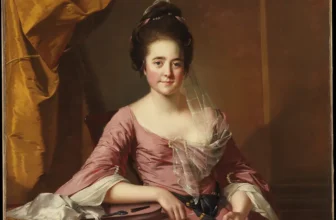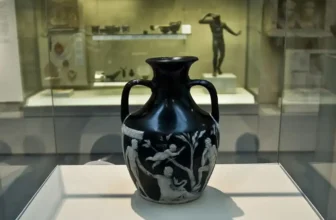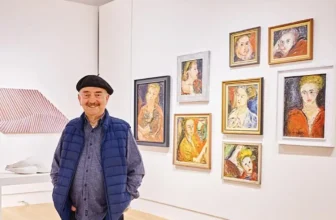How to Identify Sleeper Art Pieces with Hidden Value
In the dynamic and often unpredictable world of art, treasures sometimes hide in plain sight. From a dusty corner of a flea market to the back wall of a small-town gallery, undervalued art can exist anywhere, waiting for the right eye to recognize its worth. For collectors and investors alike, discovering a “sleeper” art piece , an artwork that is undervalued or overlooked but holds significant potential , is like striking gold.
This guide explores the secrets of identifying sleeper art pieces, how to spot undervalued works before others do, and how to train your collector’s eye to see hidden value in art.
Understanding the Concept of “Sleeper” Art
A sleeper art piece refers to a work that is not currently recognized for its full artistic or financial value. It may be overlooked due to:
The artist being unknown or forgotten.
Misattribution (the piece being credited to a lesser artist).
Lack of market exposure.
Poor presentation, restoration needs, or unfashionable style.
Emerging trends not yet catching up with the piece’s aesthetic.
Many of today’s most valuable artworks were once considered modest or secondary works. For instance, some early 20th-century abstract painters languished in obscurity until decades later when art movements caught up to their vision.
In essence, a sleeper artwork is a hidden opportunity , a gem that has not yet found its moment.
The Psychology Behind Undervalued Art
Why do some artworks become undervalued in the first place?
The art market is driven not only by aesthetics but by trends, narratives, and recognition. Popular taste fluctuates. What’s undervalued today may be the next major rediscovery tomorrow.
Three psychological factors influence how artworks are valued:
Familiarity Bias – Collectors often favor well-known names and recognizable styles, ignoring unknown artists who might have equal or superior talent.
Herd Mentality – Buyers follow what’s fashionable rather than what’s truly original or groundbreaking.
Narrative Deficiency – Without a compelling story (provenance, exhibition history, or cultural context), even great works struggle to command high prices.
Recognizing these biases allows you to identify where others aren’t looking , the sweet spot where opportunity hides.
Clues That an Artwork Is Worth More Than You Think
Every experienced collector develops a sixth sense for value. However, there are concrete clues and indicators you can use to assess whether a piece might be undervalued.
A. Signature and Provenance
A signature is not everything, but it’s a starting point. Check for:
Authenticity of the signature: Compare with verified examples.
Provenance: A paper trail showing ownership history, exhibition records, or gallery associations can dramatically raise value.
Gaps in documentation: Sometimes, an unsigned piece by a known artist can be authenticated later, exponentially increasing its value.
B. Quality of Technique
Even when the artist is unknown, the craftsmanship can speak volumes:
Strong brushwork, composition, and mastery of light and color suggest professional training.
Subtle details or innovative techniques may indicate an artist ahead of their time.
Underpainting visible through cracks, or layered composition, often signifies a sophisticated hand.
C. Materials and Age
Antique materials (old canvas, wood panels, handmade pigments) can reveal historical depth.
Framing, labels, or back markings often provide hidden clues about the artwork’s journey.
Aging signs, when consistent with the claimed era, can add authenticity.
D. Subject Matter and Style
Art trends are cyclical. Subjects once dismissed as “outdated” often return to favor. Examples:
Figurative and portrait art regained popularity after years of abstraction dominance.
Early digital or conceptual works are now sought after as the origins of postmodern movements.
If a style aligns with emerging collector tastes or underrepresented art movements, it might be on the verge of revaluation.
E. Market Comparisons
Research comparable works:
Use databases like Artnet, MutualArt, or Artprice to compare recent sales.
Study auction catalogues and gallery listings for similar works.
Pay attention to regional markets, some artists are undervalued locally but celebrated internationally.
A work priced far below market averages for comparable pieces might signal opportunity , or a mystery worth solving.
How to Spot Undervalued Art Before Everyone Else Does
Discovering a sleeper artwork requires strategy, patience, and curiosity. Here’s how to consistently find undervalued gems before the crowd catches on.
A. Explore Beyond the Obvious
Prestigious galleries and major auction houses rarely offer bargains. Instead:
Visit local auctions, estate sales, and charity events.
Explore online marketplaces (eBay, Invaluable, LiveAuctioneers, Catawiki).
Attend student exhibitions and emerging artist fairs.
Many collectors have discovered valuable works in thrift stores or artist studios before fame struck.
B. Research Emerging Movements
Follow art blogs, curators, and academic publications to track newly reappraised movements. Examples:
Female modernists and overlooked regional schools are gaining renewed attention.
Indigenous, African, and Asian contemporary art scenes are rapidly growing in global recognition.
Post-digital and environmental art movements are shaping the next generation of collectors.
C. Build an Eye for Patterns
Train your instinct by:
Visiting museums and studying masterworks up close.
Reading catalogues raisonnés (comprehensive listings of an artist’s works).
Comparing works side by side to develop visual literacy.
As your “collector’s eye” matures, you’ll start noticing subtle differences in composition, brush handling, or emotional depth , often the clues that separate a copy from a masterpiece.
D. Follow Undervalued Artists
Some artists’ markets are temporarily quiet but poised for revival. Look for:
Artists recently featured in retrospectives or museum shows.
Those whose peers are rising in value.
Artists represented in public collections but undervalued at auction.
In other words: follow the curators, not the crowd.
E. Learn Basic Art Restoration and Framing
A dirty or poorly presented piece can disguise brilliance. Understanding how light cleaning, re-framing, or conservation can transform an artwork’s appearance , and its perceived value , is key.
The Role of Provenance and Documentation
Provenance , the history of ownership , is one of the most powerful value indicators in art. Even an average-quality piece can become valuable if linked to a significant collection or exhibition.
A. Verify Documentation
Look for gallery labels, exhibition stamps, or inventory numbers on the back.
Contact former galleries or estates for archives.
Research artist foundations or authentication boards.
B. Hidden Marks and Labels
Sometimes, hidden clues , faint pencil signatures, restoration notes, or collection marks , can reveal a forgotten story. Use UV light or raking light to inspect surfaces safely.
C. Auction House Archives
Major auction houses like Christie’s and Sotheby’s provide access to past sales. A painting sold decades ago for a modest sum might now be ripe for rediscovery.
Red Flags to Avoid When Buying “Sleeper” Art
While hunting for hidden gems, beware of pitfalls. Not every old or obscure work is valuable.
A. Over-Restored or Damaged Pieces
Excessive restoration, repainting, or structural damage can reduce collector appeal , unless the work is by a very important artist.
B. Forgeries and Misattributions
Modern forgers are skilled. Always verify authenticity through recognized experts or scientific analysis if the stakes are high.
C. Trend Chasing
Avoid buying solely based on hype. Genuine undervalued art has intrinsic quality, not just trending style.
D. Lack of Due Diligence
If a seller cannot provide any history, documentation, or condition report, proceed cautiously.
How to Train Your Eye Like a Collector
Developing the “eye of the collector” takes time but can be accelerated through disciplined practice.
A. Immerse Yourself in Art
Visit museums, attend gallery openings, and join collector groups. Exposure builds familiarity and confidence.
B. Compare and Analyze
Keep a visual diary or digital catalog of pieces that intrigue you. Note why certain works stand out , composition, color harmony, or emotional resonance.
C. Study Art History and Market Cycles
Understanding art history gives context. Knowing market cycles helps you anticipate which eras or styles might be rediscovered next.
D. Build Relationships
Networking with dealers, curators, and restorers gives insider insights. They often know which artists are being quietly collected or reassessed.
E. Trust Intuition , Informed by Knowledge
Great collectors blend intuition with research. If something feels special, investigate deeply before dismissing it.
Real-World Examples of Sleeper Art Discoveries
History is full of dramatic rediscoveries that illustrate how undervalued art can transform fortunes.
The Lost Da Vinci (“Salvator Mundi”) – Purchased for less than $10,000, later authenticated as a Leonardo da Vinci work and sold for $450 million.
Thrift Store Finds – A small Renoir painting was discovered in a Virginia flea market and authenticated as genuine.
Forgotten Modernists – Many mid-century women abstract painters (like Alma Thomas and Lee Krasner) were overlooked for decades before market correction.
These stories reinforce a timeless truth: knowledge and curiosity create opportunity.
Building a Collection Strategy Around Hidden Value
To make sleeper hunting a sustainable practice, structure your approach.
A. Define Your Focus
Choose an area , a period, style, or region , where you can specialize. Expertise builds authority and sharper instincts.
B. Document Everything
Keep records of purchases, appraisals, and research notes. This builds credibility and future resale value.
C. Mix Passion with Patience
Don’t expect every acquisition to skyrocket. Some will mature slowly as scholarship and trends evolve.
D. Leverage Technology
Use AI-powered image search, art valuation apps, and blockchain provenance tools to verify and compare artworks.
E. Reassess Regularly
Re-evaluate your collection as markets change. A forgotten piece today could gain traction tomorrow.
The Untold World of Undervalued Art
The art world’s surface , glitzy auctions, celebrity collectors, headline prices , only tells part of the story. Beneath it lies a quieter realm of discovery, where observant collectors and scholars bring lost masterpieces back to light.
This “untold world” is where true artistry meets detective work. It rewards those who look deeper , beyond signatures and trends , to the essence of creativity itself.
Why It Matters
It democratizes collecting: you don’t need millions to start.
It preserves cultural heritage by rescuing forgotten works.
It transforms collecting from speculation into meaningful stewardship.
Every painting, drawing, or sculpture has a story. Some stories are forgotten; others are waiting to be rediscovered. The thrill lies in being the one who finds them.
Becoming the Discoverer, Not the Follower
To identify sleeper art pieces with hidden value, you must think differently from the crowd. Don’t just chase what’s trending , seek what’s overlooked, authentic, and timeless.
Train your eye. Trust your instincts. Study relentlessly. Because in the end, the art market rewards curiosity, knowledge, and courage.
The next great discovery could be hanging unnoticed , until you recognize it. image/ vincentvangogh




